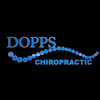Do You Know the Difference Between Moving Your Joints Actively and Having Them Moved Passively?
- Dr. Rory Dopps

- Jul 4, 2024
- 3 min read

Understanding the differences between Active and Passive Range of Motion (ROM) is crucial for comprehensive joint care, injury prevention, and enhancing physical performance. This article delves into the importance of both types of ROM and their roles in maintaining joint health and mobility.
Definition and Importance of ROM
Definition: Range of Motion (ROM) refers to the full movement potential of a joint, typically measured in degrees. It's a critical aspect of joint health, determining how far you can move or stretch a joint in various directions.
Importance of ROM: Maintaining proper ROM is essential for several reasons:
Prevention of stiffness and immobility: Regular movement helps keep the joints flexible.
Reduction of injury risk and enhancement of physical performance: Proper ROM allows for better balance and coordination, reducing the likelihood of strains and sprains.
Active Range of Motion (AROM)
Definition: Active Range of Motion (AROM) involves movements performed by the individual without any external assistance. This type of ROM primarily affects the muscles.
Benefits of AROM:
Enhances muscle strength and coordination: Performing AROM exercises engages the muscles, improving their strength and coordination.
Promotes joint flexibility and function: Regular AROM exercises help maintain and improve joint flexibility.
Examples of AROM Exercises:
Shoulder circles, arm raises, and leg lifts: These exercises help improve flexibility and strength in the shoulder and leg joints.
Functional activities like walking, climbing stairs, and lifting objects: Everyday activities that naturally incorporate AROM.
Passive Range of Motion (PROM)
Definition: Passive Range of Motion (PROM) involves movements performed with the assistance of an external force, such as a therapist or a device. This type of ROM affects both the muscles and the joint ligaments.
Benefits of PROM:
Helps maintain joint flexibility in individuals with limited mobility: PROM exercises can help individuals who cannot perform AROM exercises maintain their joint flexibility.
Reduces the risk of contractures and muscle atrophy: Regular PROM exercises can help prevent the muscles and joints from becoming stiff and immobile.
Examples of PROM Exercises:
Therapist-assisted movements: Passive shoulder or hip rotations performed by a physiotherapist.
Using devices like pulleys or stretch bands: These tools can assist in performing passive stretches and movements.
Combining AROM and PROM for Optimal Joint Health
Balanced Approach: Combining both AROM and PROM is essential for comprehensive joint care.
Complementary Benefits: AROM and PROM complement each other, with AROM enhancing muscle strength and PROM maintaining joint flexibility.
Balanced Exercise Regimen: Incorporating both types of ROM into your routine ensures a well-rounded approach to joint health.
Chiropractic and Physiotherapy Integration: Doctors of chiropractic can provide both chiropractic care and physiotherapy to optimize ROM.
Chiropractic Techniques: Chiropractors use specific techniques to enhance both AROM and PROM.
Personalized Exercise Plans: Physiotherapists develop personalized exercise plans to improve flexibility and strength.
The Role of the DUTCH Test in Identifying Deficiencies
Introduction to the DUTCH Test: The DUTCH Test (Dried Urine Test for Comprehensive Hormones) helps identify hormonal imbalances and nutrient deficiencies that may affect joint health.
Identifying Gaps in Supplementation: The DUTCH Test can pinpoint deficiencies that may impact joint health.
Detecting Inflammation Markers: This test can identify inflammation markers indicative of conditions like arthritis.
Inflammation and ROM: Chronic inflammation, the hallmark of arthritis, can limit ROM.
Limiting Joint Mobility: Chronic inflammation can cause stiffness and reduce flexibility.
Importance of Addressing Inflammation: Identifying and addressing inflammation is crucial for maintaining ROM.
Practical Tips for Maintaining and Improving ROM
Daily Routine: Incorporate ROM exercises into your daily routine.
Dedicated Time for Exercises: Set aside time for stretching and mobility exercises.
Use Reminders or Apps: Tools like reminders or apps can help ensure consistency.
Ergonomics and Lifestyle: Proper ergonomics and lifestyle choices are essential for maintaining ROM.
Proper Posture and Ergonomic Setups: Ensure that your workspace and living spaces support good posture.
Staying Active: Avoid prolonged periods of inactivity and incorporate regular physical activity.
Conclusion
Understanding and maintaining both Active and Passive Range of Motion is crucial for preventing injuries, enhancing mobility, and improving overall quality of life. Regular assessments, proper exercise, and professional care are key to keeping your joints healthy and flexible.
To assist in performing both active and passive stretching exercises, consider using a stretching strap. A stretching strap can help improve flexibility and ROM. Additionally, Designs for Health’s ArthroSoothe™ provides comprehensive support for joint health, helping to maintain proper function and flexibility, making it an ideal supplement to support both active and passive ROM exercises.
Call to Action: Want to improve your Range of Motion and joint health? Visit doppskc.com to schedule an online consultation with Dr. Rory Dopps and learn how a combination of chiropractic care, targeted exercises, and the DUTCH Test can help you achieve optimal mobility and well-being.




Comentários